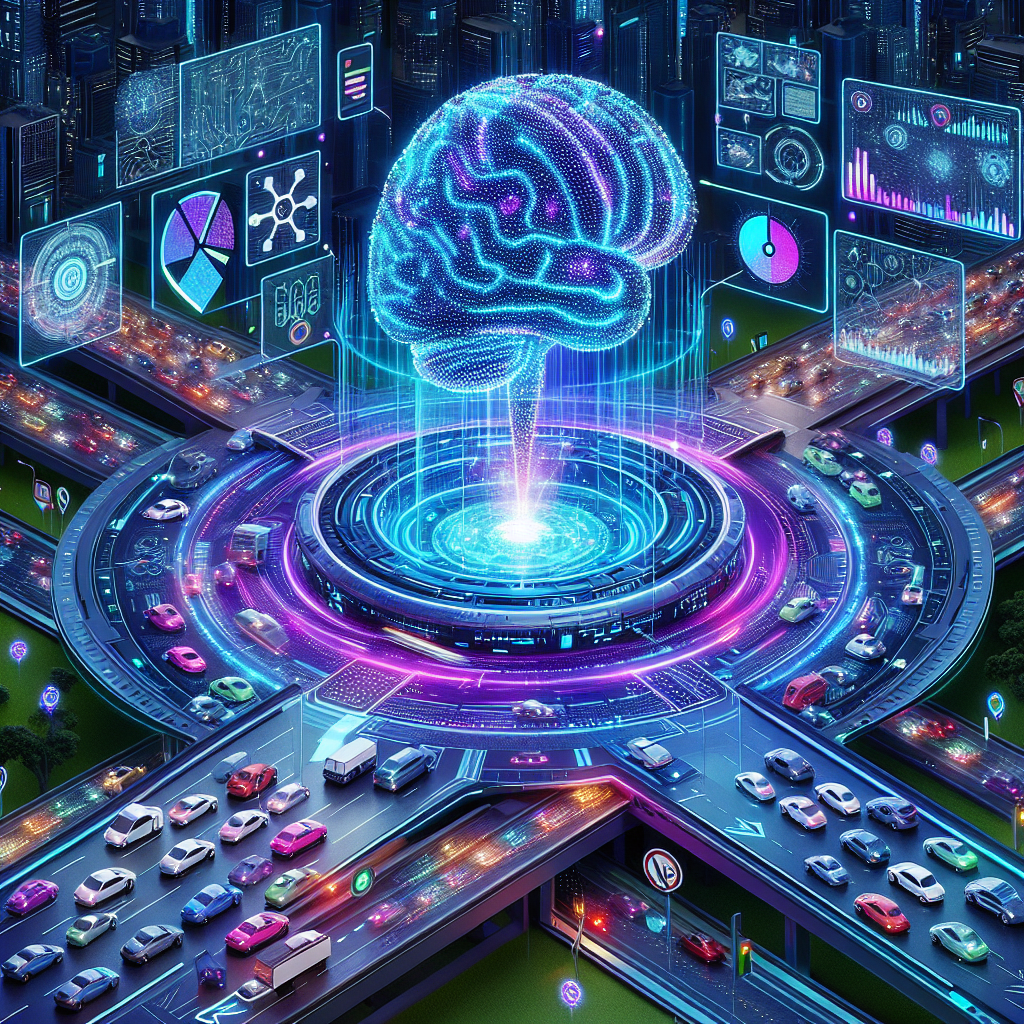As cities continue to grow and populations increase, traffic congestion has become a major issue in urban areas around the world. With millions of vehicles on the roads each day, managing traffic flow and reducing congestion has become a top priority for city planners and transportation authorities. One technology that is playing a key role in real-time traffic management and congestion reduction is Artificial Intelligence (AI).
AI is revolutionizing the way traffic is managed in cities by providing real-time data analysis and predictive modeling to help optimize traffic flow and reduce congestion. By using AI algorithms and machine learning techniques, transportation authorities can better understand traffic patterns, predict traffic congestion, and make informed decisions to improve traffic flow.
One of the key ways AI is being used in real-time traffic management is through traffic signal optimization. AI algorithms can analyze real-time traffic data, such as vehicle counts, speed, and congestion levels, to determine the optimal timing for traffic signals at intersections. By adjusting signal timing based on real-time traffic conditions, AI can help reduce congestion and improve traffic flow.
Another way AI is being used in traffic management is through predictive modeling. By analyzing historical traffic data and using machine learning algorithms, transportation authorities can predict future traffic patterns and congestion hotspots. This allows authorities to proactively address potential congestion areas and implement strategies to reduce traffic congestion before it becomes a problem.
AI is also being used to improve traffic flow through dynamic routing. By analyzing real-time traffic data and using predictive modeling, AI can recommend alternative routes to drivers to avoid congestion and reduce travel times. This helps to distribute traffic more evenly across road networks and reduce congestion on heavily traveled routes.
In addition to real-time traffic management, AI is also being used to improve safety on the roads. AI-powered systems can analyze traffic data to identify potential safety hazards, such as speeding or aggressive driving, and alert authorities to take action. By improving safety on the roads, AI can help reduce accidents and further alleviate traffic congestion.
Overall, AI is playing a crucial role in real-time traffic management and congestion reduction by providing transportation authorities with the tools they need to optimize traffic flow, predict congestion, and improve safety on the roads. As cities continue to grow and traffic congestion becomes an increasingly pressing issue, AI will play an even greater role in helping to manage traffic and reduce congestion in urban areas.
FAQs:
1. How does AI help reduce traffic congestion?
AI helps reduce traffic congestion by analyzing real-time traffic data, predicting congestion hotspots, optimizing traffic signal timing, and recommending alternative routes to drivers. By providing transportation authorities with the tools they need to make informed decisions, AI can help improve traffic flow and reduce congestion on the roads.
2. How is AI being used in traffic signal optimization?
AI is being used in traffic signal optimization by analyzing real-time traffic data, such as vehicle counts, speed, and congestion levels, to determine the optimal timing for traffic signals at intersections. By adjusting signal timing based on real-time traffic conditions, AI can help reduce congestion and improve traffic flow.
3. How does AI improve safety on the roads?
AI improves safety on the roads by analyzing traffic data to identify potential safety hazards, such as speeding or aggressive driving, and alerting authorities to take action. By improving safety on the roads, AI can help reduce accidents and further alleviate traffic congestion.
4. How can AI help predict future traffic patterns?
AI can predict future traffic patterns by analyzing historical traffic data and using machine learning algorithms to forecast traffic trends. By predicting future traffic patterns, transportation authorities can proactively address potential congestion areas and implement strategies to reduce traffic congestion before it becomes a problem.
5. What are the benefits of using AI in real-time traffic management?
The benefits of using AI in real-time traffic management include improved traffic flow, reduced congestion, increased safety on the roads, and more efficient use of transportation resources. By providing transportation authorities with the tools they need to optimize traffic flow and make informed decisions, AI can help alleviate traffic congestion and improve the overall transportation experience in urban areas.

